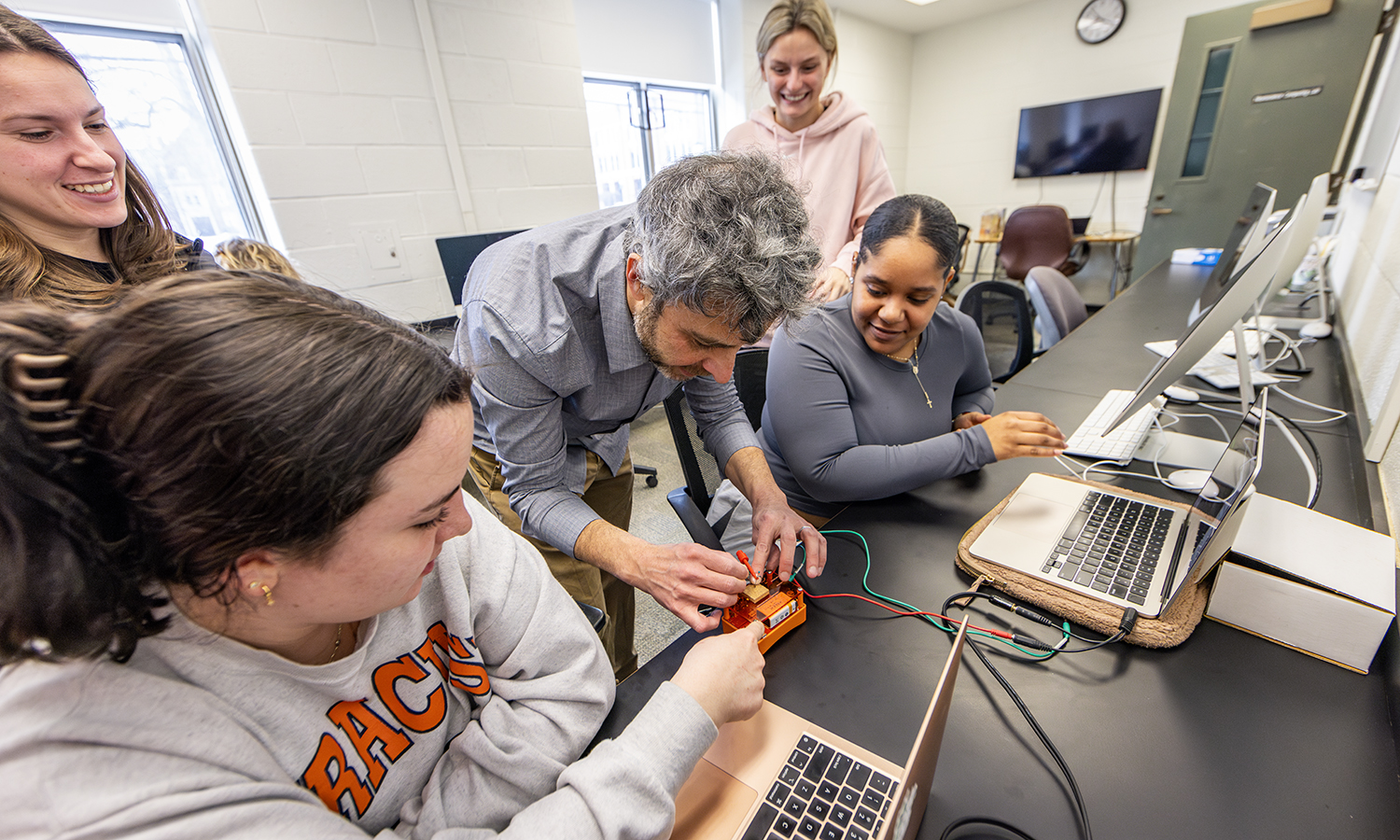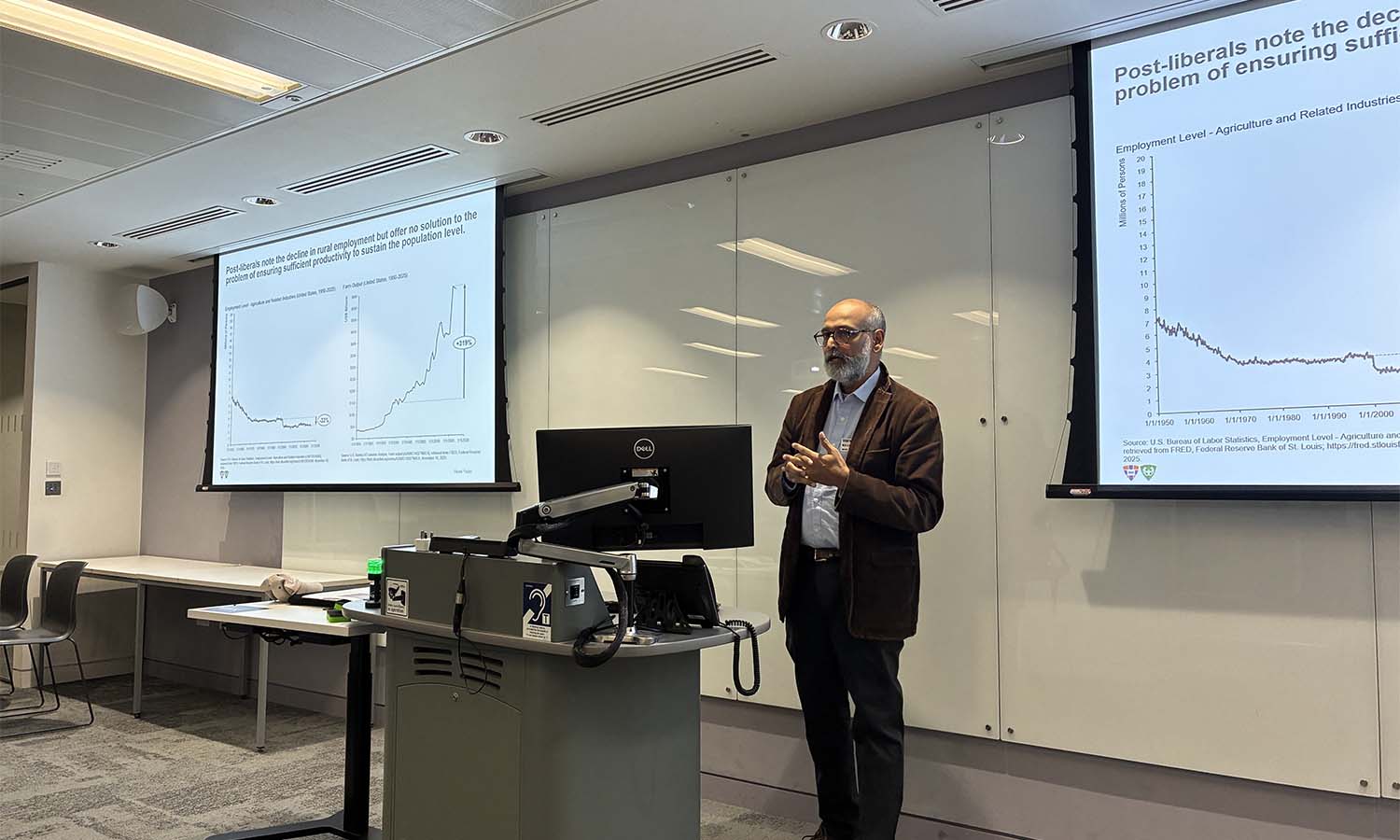
HWS News
30 April 2025 • Faculty • Research Graham Flips Perspective on Neural Coding
Associate Professor Daniel Graham parses new viewpoint on brain dynamics research that can create better understanding of disorders such as epilepsy.
Associate Professor of Psychological Science Daniel Graham’s article, “It’s time to examine neural coding from the message’s point of view” published this month on the leading neuroscience news site, The Transmitter, challenges prevailing research investigating how neuronal systems work together.
According to Graham, until recently, research into the brain’s neuronal networks examined communication pathways from one perspective: that of the neuron itself. But as the article’s title implies, analyses of current research suggests a change in perspective might propel progress.
In his article Graham acknowledges that studying the neuron, and what single neurons and collections of neurons “represent,” has been successful. “We have learned a tremendous amount about how features of the world and body can be encoded in the spiking activity of individual brain cells,” he writes.
But, Graham says, because the neuron viewpoint is static and local, it is mostly blind to how messages, or meaningful signals, flow over multiple “hops,” or synapses. This new perspective could help us understand brain disorders.
“At the moment we lack almost any tools to cure brain disorders. Take epilepsy: we don’t know what causes it. There are drugs that are effective in some people but not others. When the drugs don’t work, the solution is to cut out a chunk of brain tissue causing the problem. This is also quite a successful strategy, but it is not based on an understanding of the root cause of the disorder—i.e., why did that piece of brain tissue malfunction,” he says.
Graham believes that tracking the brain’s communication pathways is a primary step in understanding those malfunctions, as well as more fundamental questions. To do that, Graham suggests researchers follow the messages themselves as a way of tracing these networks and their connections. Current technology can’t yet achieve this, but framing the problem in these terms could spur innovation in experimental methods.
“We know neurons are obviously important, and we can see what they can accomplish. But we don’t yet know what the right thing to measure about them is. I think it’s the flow of messages, whatever it is that constitutes messages,” Graham says.
Graham earned his B.A. in physics at Middlebury College and his Ph.D. in psychology at Cornell University working in the lab of David Field, where he served as an NIH Kirschstein-NRSA predoctoral fellow. He held postdoctoral fellowships in mathematics and brain science at Dartmouth College and in psychology at the University of Vienna.
His research in systems and computational neuroscience addresses questions on the dynamics of brain networks, the nature of human vision and the perception of art and aesthetic images.
Graham is also the author of “An Internet in Your Head: A New Paradigm for How the Brain Works” (Columbia University Press, 2021), which proposes that we can achieve a new and better understanding of how the human brain works if we compare its basic operation to that of the internet rather than that of a single computer.
He writes a blog for Psychology Today on the same theme.
In the photo above, Associate Professor of Psychological Science Daniel Graham works with students during a lab for the “Capstone in Perception.”



